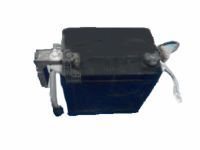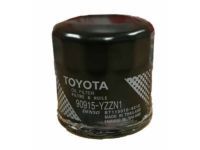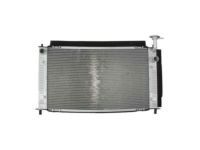- Hello
- Login or Register
- Quick Links
- Live Chat
- Track Order
- Parts Availability
- RMA
- Help Center
- Contact Us
- Shop for
- Toyota Parts
- Scion Parts
Popular OEM Toyota Prius Parts
- Body & Hardware Parts View More >
- Electrical Parts View More >
- Engine Parts View More >
- Air & Fuel Delivery Parts View More >
- Belts & Cooling Parts View More >
- Steering Parts View More >
- Suspension Parts View More >
- Emission Control & Exhaust Parts View More >
- A/C & Heating Parts View More >
- Brakes Parts View More >
- Headlights & Lighting Parts View More >
Why Buy Genuine Toyota Prius Parts From ToyotaPartsNow.com
ToyotaPartsNow.com highlights the reliability of OEM Toyota Prius parts right at your fingertips. Our skilled staff assists customers in selecting the right Toyota Prius parts and provides expert help with any unique part requests. At ToyotaPartsNow.com, we make all Toyota Prius parts available to you quickly and efficiently through our fast order and reliable ship process. Our service is designed to make finding the correct Toyota Prius parts fast and easy whether you are an amateur or a professional. We offer access to a broad inventory that includes a wide range of Toyota years and variants. Affordable prices, quick processing and professional service are also our specialty to ensure your car remains in top condition with OEM Toyota Prius parts. You can feel confident shopping with us because all Toyota Prius parts you purchase from our store are of genuine quality and built to last.
The Toyota Prius entered the market in 1997 as a gasoline-electric hybrid vehicle and has gone through major developments in its motive power and gearbox systems. The Toyota Prius hybrid propulsion system joins a 1.8-liter four-cylinder engine with an electric motor which produces 121 horsepower in total output. Through its usage of continuously variable transmission (CVT) systems the powertrain system achieves maximum fuel efficiency and maintains smooth acceleration. The Toyota Prius has an aerodynamic shape that enables it to reach EPA ratings of 54 mpg in city driving and 50 mpg on highways through its low drag coefficient design. The third-generation Toyota Prius with model designation NHW20 received a redesigned chassis that delivered more room for posterior passengers and bigger trunk storage without affecting its compact liftback shape. The vehicle achieves better efficiency because the hood and tailgate use aluminum lightweight components as part of its construction. The Toyota Prius integrates two advanced features that include regenerative braking which utilizes braking energy to recharge the battery. Full maintenance of the Toyota Prius requires original components because Toyota subjects these parts to thorough quality tests before certifying them for reliability and durability according to their standards. Toyota maintains its dedication to high-quality components for reliable and efficient vehicles which keeps the Prius competitive in its hybrid market segment.
The Toyota Prius is an efficient car; however, it may have several problems related to its electric and cooling system. The problem of the Toyota Prius fuel gauge giving wrong readings is one of the common problems that is related to the fuel system. Mechanics recommend resetting the Toyota Prius fuel gauge to eliminate this problem. Another electrical issue is when the Check Engine Light will be on when a three-way coolant control valve fails causing a fault code P1121 to appear. Replacing this valve ensures proper engine function. Also, it is possible to have failure of the Toyota Prius power inverter coolant pump that may trigger another Check Engine Light with fault code P0A93. Replacing a failing coolant pump prevents overheating of the hybrid system. As the Toyota service bulletin indicates, Toyota released a newer pump for the 2004-2006 models. Fixing these issues early can avoid additional problems and your Prius will work more efficiently. The maintenance and replacement of faulty parts is essential in the life span of the vehicle. On the whole, these issues indicate the state of electrical and cooling system observation in the Toyota Prius.
Toyota Prius Parts and Q&A
- Q: How to remove and install the 12V Car Batteries on Toyota Prius?A:To access the 12V battery, unlock knobs of the washer tank cover, remove rear floor board and disconnect the required components. Disassemble the battery by disconnecting the battery negative, change the battery, and be sure to install it with the correct torque requirements. When reconnecting the battery reconnect all components and initialize some systems.
- Q: How to replace the oil filter sub-assembly on Toyota Prius?A:Wear protective clothes and wash hands after touching oil to replace the oil filter (1NZ-FXE). Empty the engine oil, wipe off the drain plug and replace it. Take out and replace with the new oil filter and put in new engine oil. Lastly, check the engine oil and discard used material in the most appropriate manner.
- Q: How should you clean the radiator on Toyota Prius?A:To clean the vehicle's radiator, use water or a steam cleaner to remove mud or dirt from the fins, maintaining a safe distance between the cleaner nozzle and fins to prevent deformation, particularly with high-pressure cleaners.















































